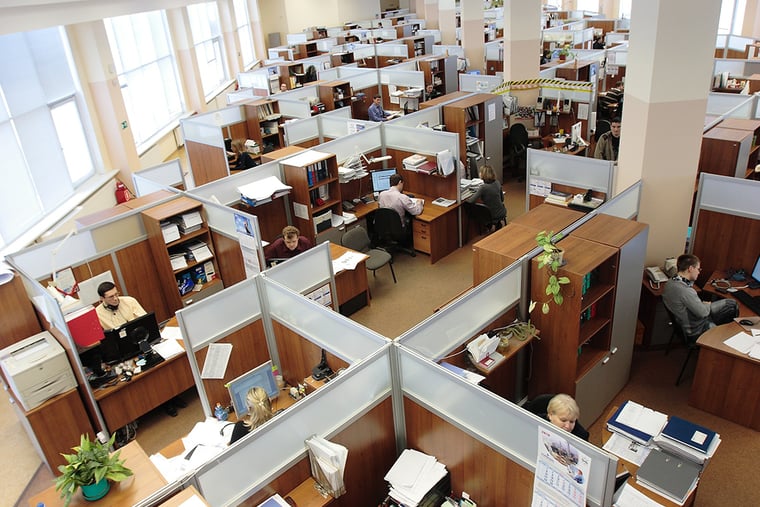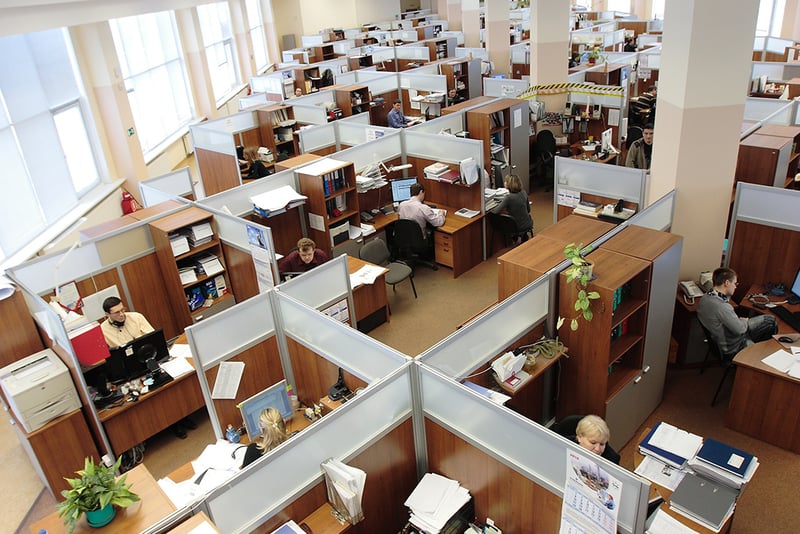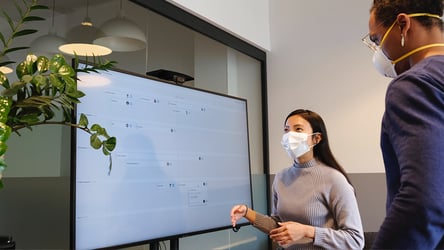
Why is the neighborhood baker always complaining? Because he has a crumby job. Excellent pun, right? We'll get back to that.
Neighborhood (noun): the area surrounding a particular place, person, or object.
Funnily enough, assembling "neighborhoods" in the workplace can be the key to eliminating crummy employee experiences and missed opportunities. They work nearly identical to neighborhoods in the real world but are built around purpose and people, not houses or properties.
Building A Community
In the real world or a real neighborhood rather, people come together to build unique communities. While they are often united by a location, it's the people that make a community truly what it is. From barbecues to community events or even to volunteer services like a neighborhood watch, the people work together to make their home and community better.
They might work on projects to improve their neighborhood, like putting in a park, pool, or meeting hall. They might organize get-togethers and collaborative projects, like setting up holiday parties, or street-wide decorations. In some neighborhoods, people take that a step further, watching homes while others are away on vacation, or mowing lawns, or even watching neighborhood kids when they come to play with their children.
Each family has a private space, their home(s), but overall everyone contributes to the general area. This is precisely how neighborhoods in the workplace should be handled.
What Does A Neighborhood Work Environment Look Like?
Understandably, a workplace neighborhood looks and feels a lot different than conventional ones, although the concepts are similar.
Smaller groups or teams are segmented and assembled to facilitate more productive operations. Bear in mind, while each group is considered distinct or separate, they are not closed off in any way from the rest of the department or company. There is still a lot of cross-collaboration between neighborhoods, which is exactly what the overall goal is.

Employees are invited or allocated into neighborhoods based on a variety of factors:
- Work Environment - Mood and settings, like loud versus quiet, or darker ambiance for coding engineers (shout out!) versus more light for social experiences.
- Workstation Equipment - Remote teleconferencing tech, whiteboards, collaborative devices, interactive stations, etc.
- Team Members - Assembled based on department, role, and collaboration needs
- Work Tasks - Designated by the general accomplishment or task at hand or project.
- Area Layout - Cubicles, pits, desks, and other types of shared or private spaces
The idea is to create neighborhoods that will expressly improve productivity and output. In other words, the factors chosen are always a means to an end. The most influential component is the thing that unites a group. It's activity-based working 101, where the glue is the task — or tasks — at hand.
A 2016 Gallup Poll shows that teams with high levels of employee engagement are 21% more productive, on average. It's also worth noting, workplace neighborhoods are generally small in scope, including anywhere from 30 to 60 people per community.
What Is Neighborhood Seating?
Neighborhood seating is an offshoot of the workspace neighborhood concept. To put it simply, it's a method for addressing neighborhood-based choice environments.
After creating an employee neighborhood, each group or community will need a space to collaborate and work. A neighborhood office concept, or open office neighborhood, speaks to the fluidity of the community by providing dynamic, smart desking opportunities, sometimes even ones that are modular (with the right workplace experience platform.) Assigned seating, at least the conventional kind, goes right out the window. Hoteling and workspace booking solutions are a hot ticket, as are temporary stations like pods, desks, and cubes.
A neighborhood office layout is designed and built explicitly to support multiple communities, as opposed to just one.
Establishing A Workplace Neighborhood
Remember we said we'd return to that lovely baker's pun? One thing that makes a workplace crummy is isolation, especially when it comes to difficult or challenging tasks. Sometimes, people need the support of their peers, if only for a quick pick-me-up, or social collaboration.
When establishing neighborhoods in the workplace, both in form and function, they should service this idea of support and communal experiences.
For example, flexible office seating arrangements might still be used to create a dynamic and modular space allowing different types of employees to come into a neighborhood and just as easily 'move out'. Neighborhoods might move from one location to another based on their current responsibilities, such as moving to a conference room for brainstorming or teamwork exercises.
Primarily, this encourages everyone to stay on an even keel, with sameness and similar expectations, all within given constraints. It also affords an incredible amount of flexibility to refine or rearrange the community, over time. A dynamic solution is especially important when dealing with large groups because employees come and go regularly as they transition between home and HQ, plus community needs itself tend to fluctuate.
A Bankwest case study reveals that 91% of employees enjoy the freedom of choosing their daily work setting, mostly based on the task or activity they're working on.
The fluidity of an agile work environment is instrumental in successfully implementing neighborhoods and smaller communities.
Workplace 2.0 - Adaption To The New World of Work
The entire workplace experience is shifting towards something different, something new. Part of this has been spurred by the current state of the world, yes, but it's also due to employee demands and concerns. We were always headed in this direction, albeit at a slower pace.
Right now, the 3 things that employees miss the most about the workplace are in-person collaboration opportunities, social environments, and an immediate connection with others as opposed to virtual. An established neighborhood as part of your return to work strategy, gives them all of these things, and more.
Moreover, there are many changes that are either happening currently, or bound to happen soon, including:
- Changes in infrastructure to support hybrid work solutions and a dynamic workforce
- New work culture expectations relating to where and how we work
- Employee reflections, or inflections rather, about work and how that affects their satisfaction and productivity
- Smarter and more modular uses for workspace and stations
- More calculated, more needs-driven use of work environments
- Targeted in-office expectations and contextual experiences
- More flexibility and connectedness to move between worlds and locales, like WFH versus in-office
- Accommodations for safe workplace reentry and physical distancing
Neighborhoods fit into the equation for one simple, yet impactful reason. They allow management to better assess, interact, and engage with different groups of people but also foster the same experiences for those within the community.
It's a lot like dividing major operations into departments, where everyone is virtually focused on the same goals. The difference is that nothing is siloed, nothing is truly divided, and seamless collaboration is encouraged.
BONUS! Occupancy management is much easier when you know who's supposed to be where, as well, especially in a continually shifting work environment. Agile neighborhoods, while fluid, are still easy to keep track of when it comes to accountability, deliverables, and milestones.
Plus, the baker would agree, having a community around you is a lot less crummy.

.png)

.png)






